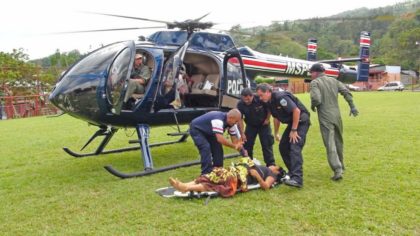
MSP
It may be surprising, but the use of Internet, Whatsapp, fixed communication radios and computers save lives in the native areas of Costa Rica.
Thanks to the Internet, satellite and landline telephone signals, authorities can assist native people who are bitten by snakes or dogs, women with pregnancy problems, hemorrhages, people injured in fights or poisoned people.
The situation was not different during hurrican Otto’s emergency, in which 10 people died and there were multiple material damages.
The calls asking for help are confirmed by officials of the Costa Rican Social Security Fund (CCSS), the Red Cross or the air committee from the Ministry of Public Security, and a rescue team is immediately sent.
There are about 500,000 indigenous inhabitants, originally from Costa Rican territory, which represent 12.4% of the total population.
Some of these Costa Ricans arrive by their own means to the health centers, after walking for hours, or being carried in improvised stretchers or on horseback.
Others are located in open fields where helicopters from the Ministry of Security, with medical equipment, pick them up to transport them on a direct flight to the nearest hospital.
The Costa Rican Electricity Institute (ICE) serves 289 hard-to-reach places because the institution must provide the telephone service. Among them, 33 indigenous communities have Internet access. It also benefits businesses, educational centers and health care services.
Other companies such as Movistar and Claro also offer these services in native towns, depending on their technical capacities. This was confirmed in communities such as Puerto Viejo, Cahuita or Playa Chiquita in Talamanca.
In 2015, the air committee conducted 308 emergency flights and until October 27th, 2016, 179 flights had been counted from several points in some native areas.